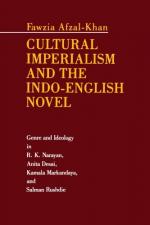|
This section contains 3,375 words (approx. 12 pages at 300 words per page) |

|
SOURCE: "Symbolism in R. K. Narayan's 'Naga,'" in Studies in Short Fiction, Vol. 31, No. 3, Summer, 1994, pp. 425-32.
In the following essay, Urstad describes Narayan's literary technique of juxtaposing modern life with elements of myth. Urstad sees "Naga" as representative of this technique and analyses its effectiveness in short fiction.
R. K. Narayan is generally acknowledged as the most outstanding of the three major Indian authors writing in English to emerge in the 1930s (R. K. Narayan, Mulk Raj Anand, Raja Rao). His works have been described as "an original blend of Western method and Eastern material." His material is "Eastern" not just in the sense that he describes Indian characters in an Indian setting, but in the way that he uses references to Hindu mythology and the Indian epics to lend depth to his own works. He has what Britta Olinder has called "a singular power of...
|
This section contains 3,375 words (approx. 12 pages at 300 words per page) |

|


